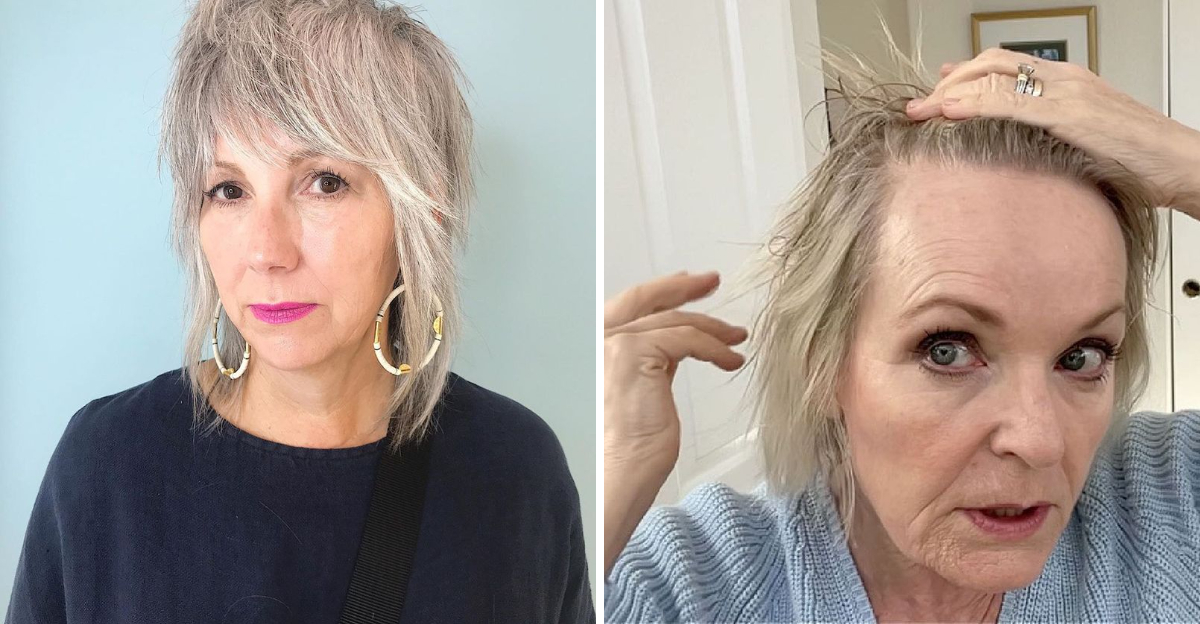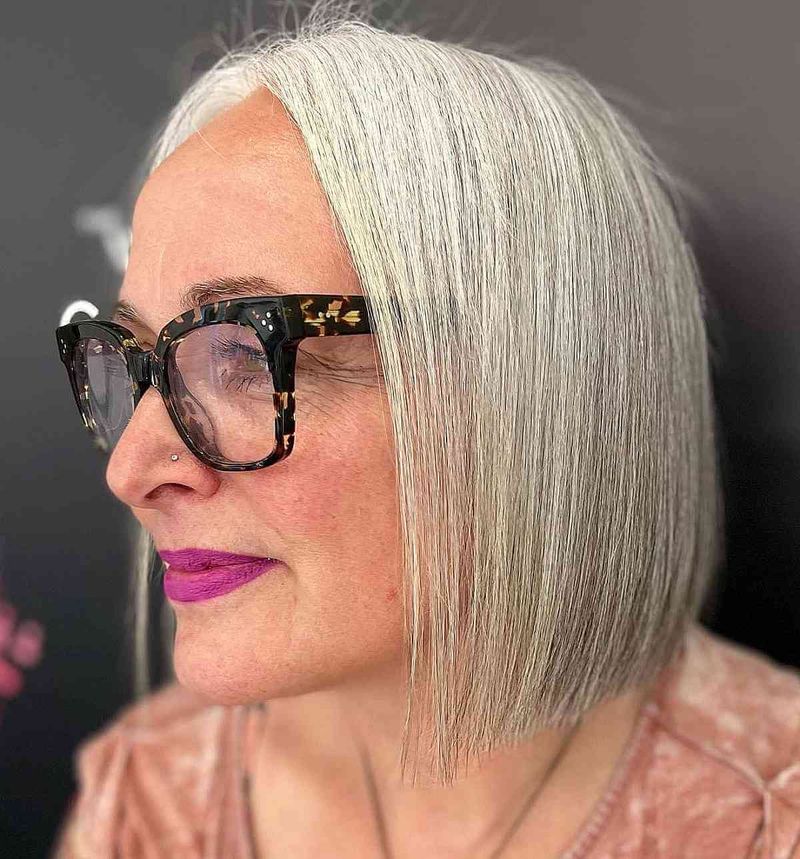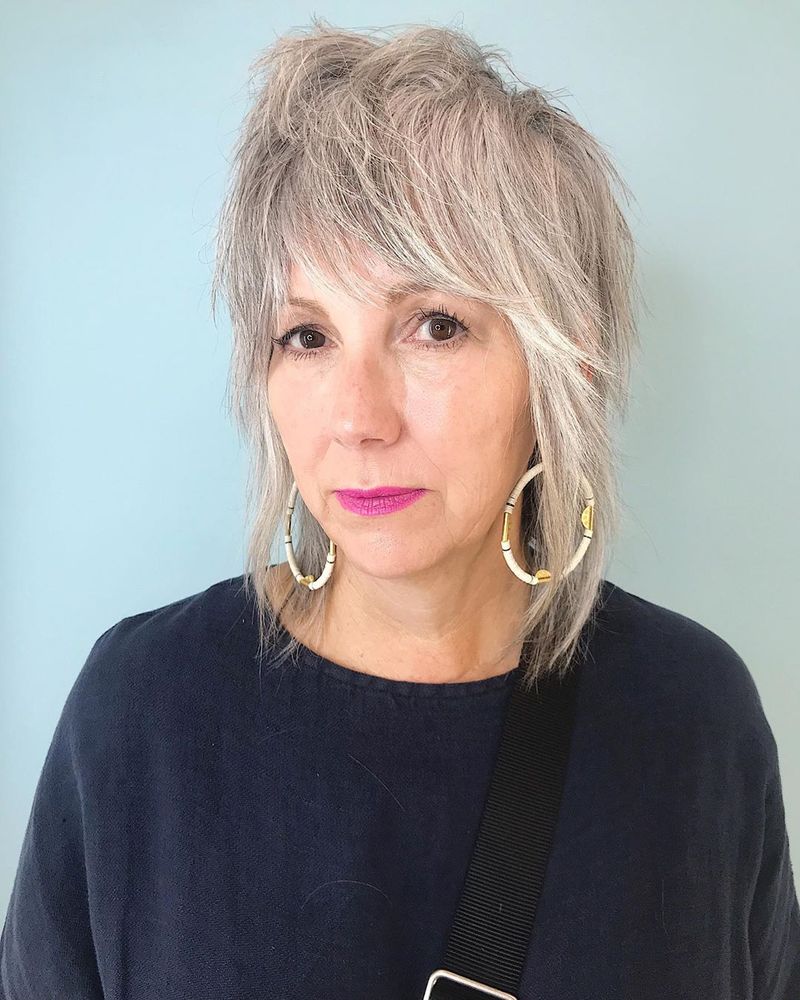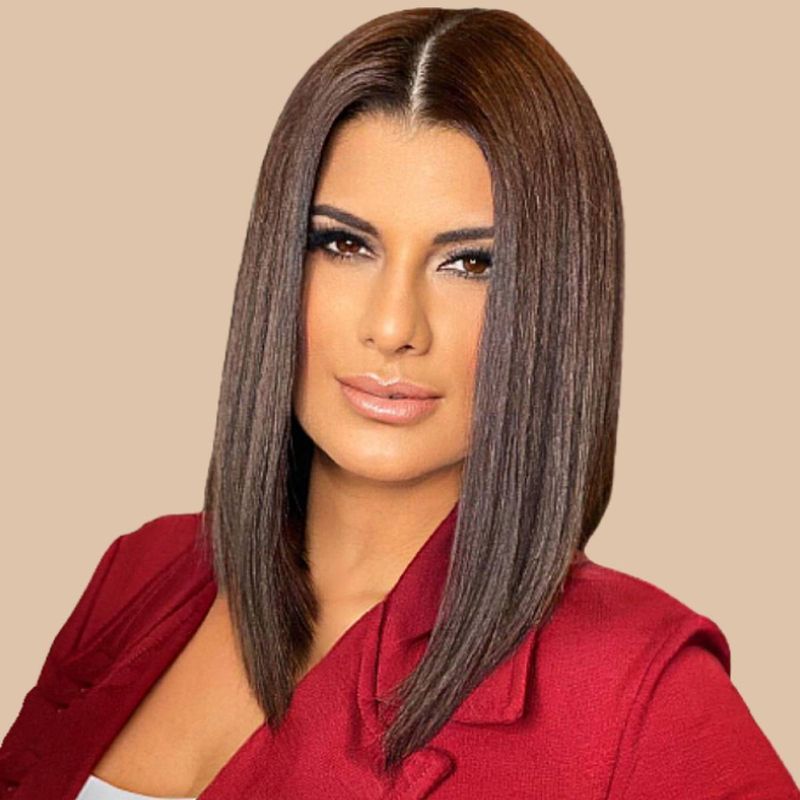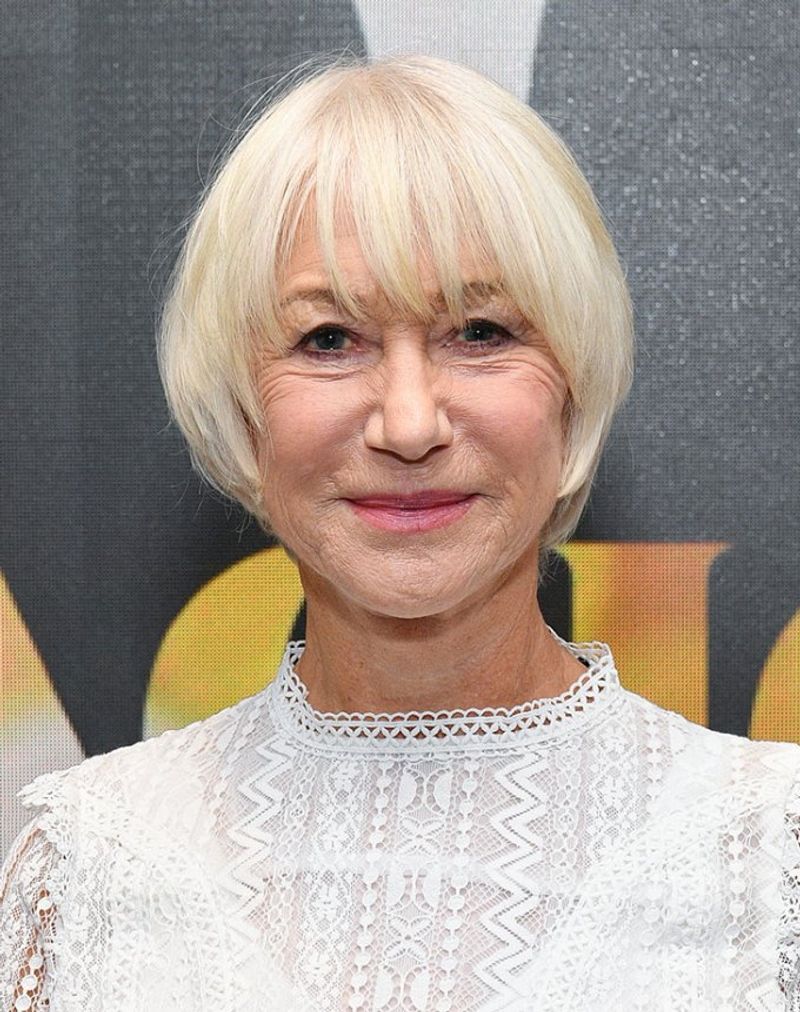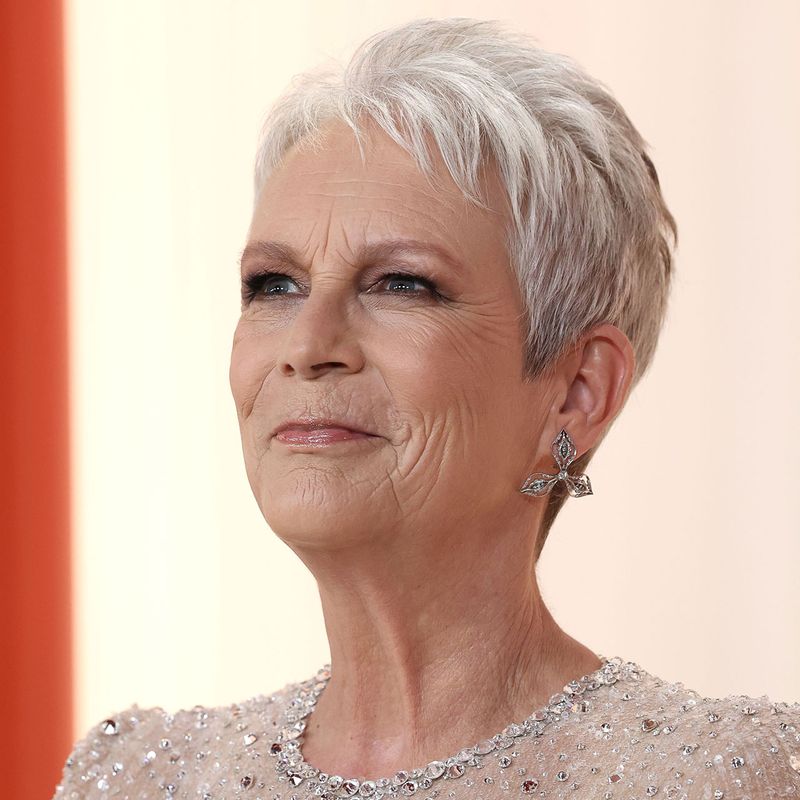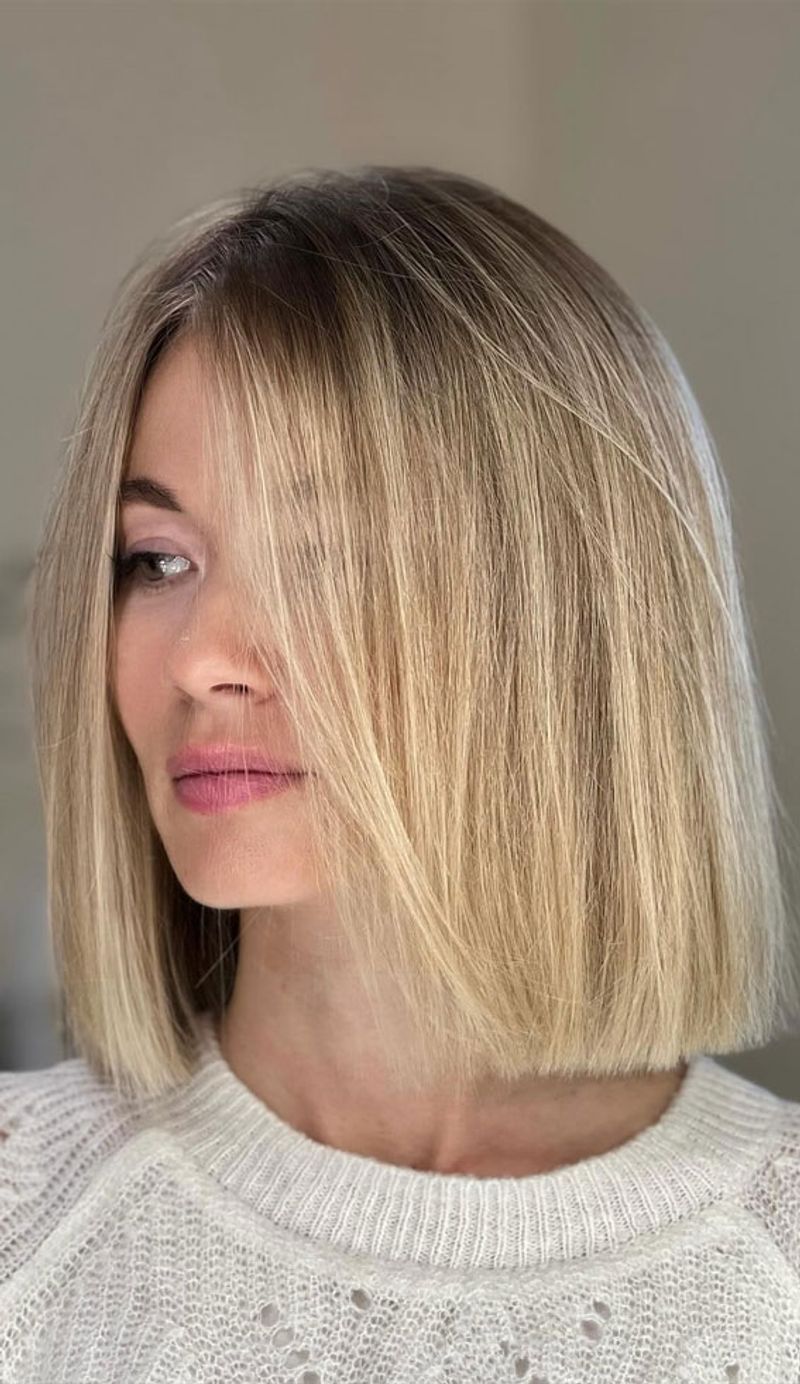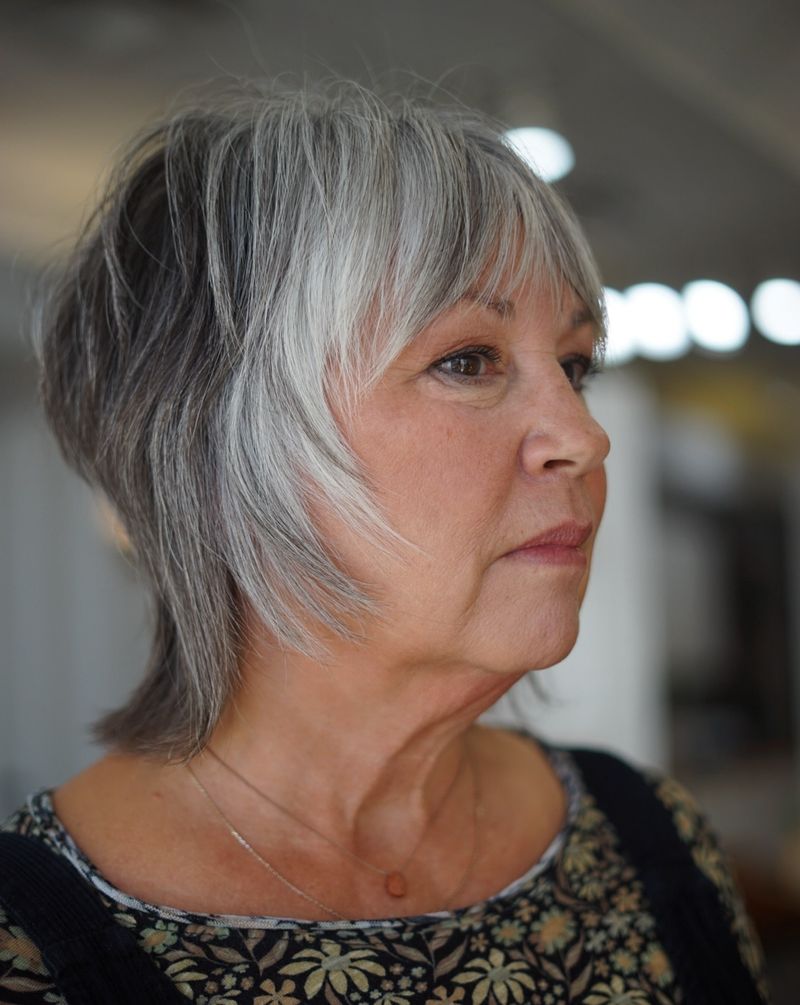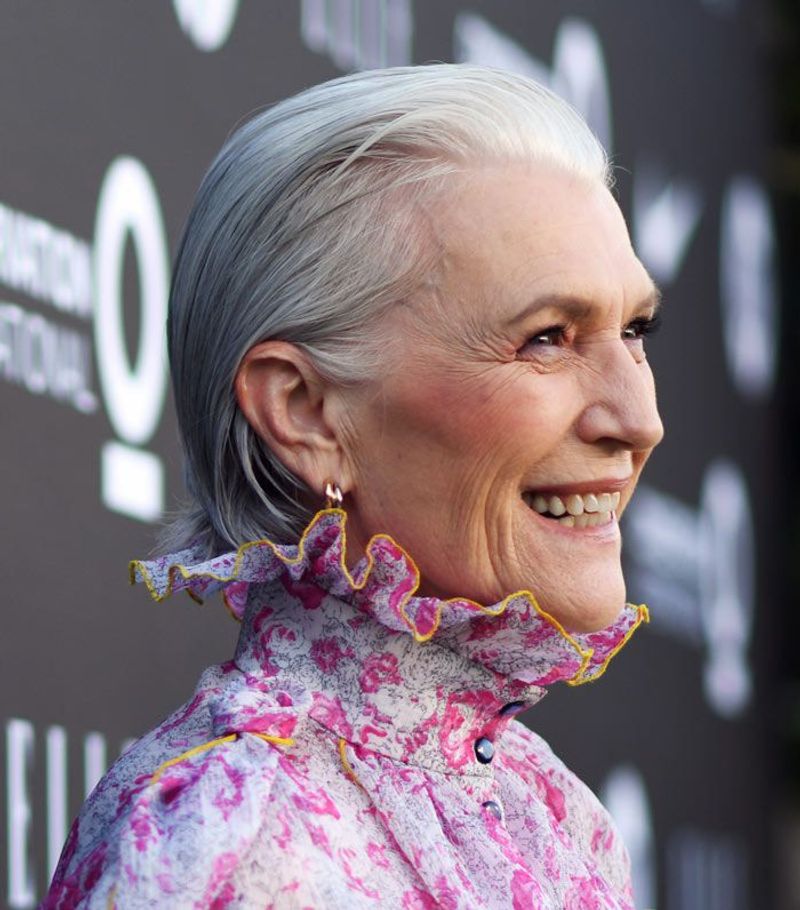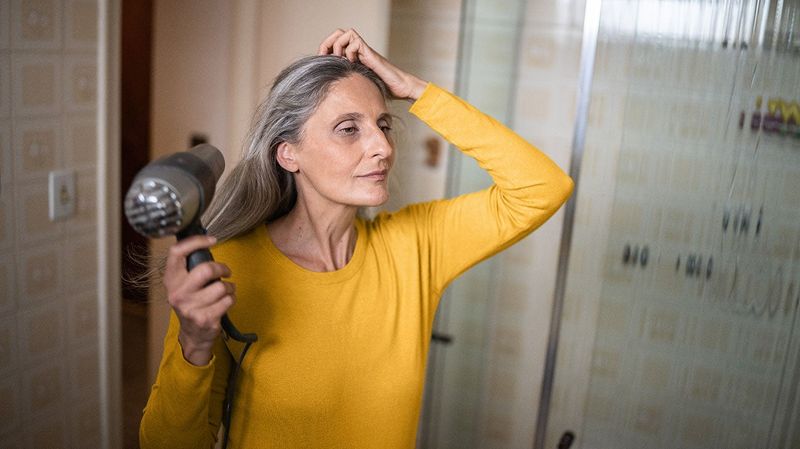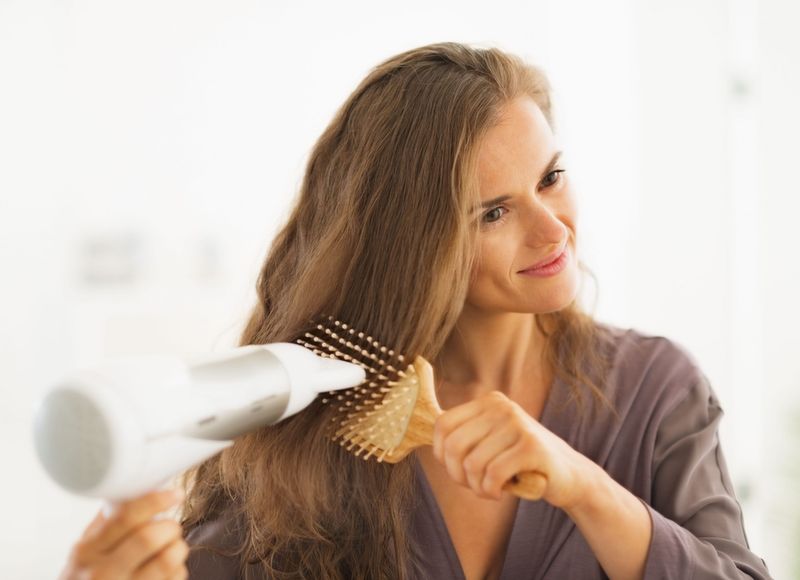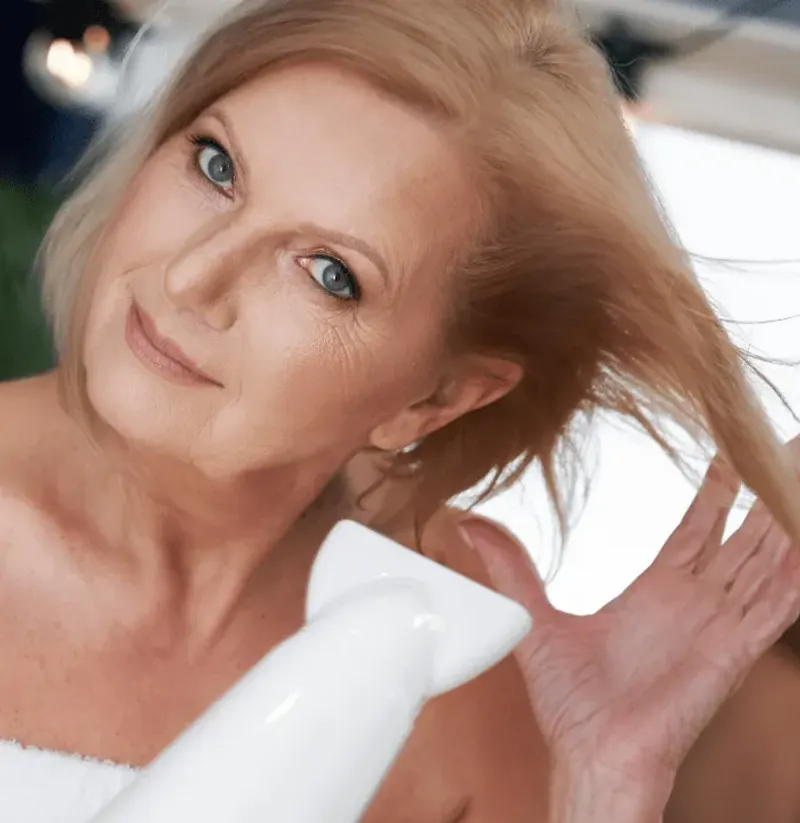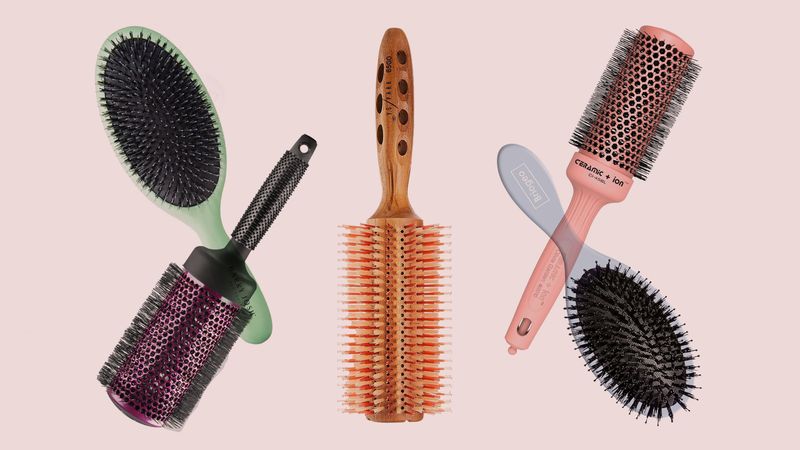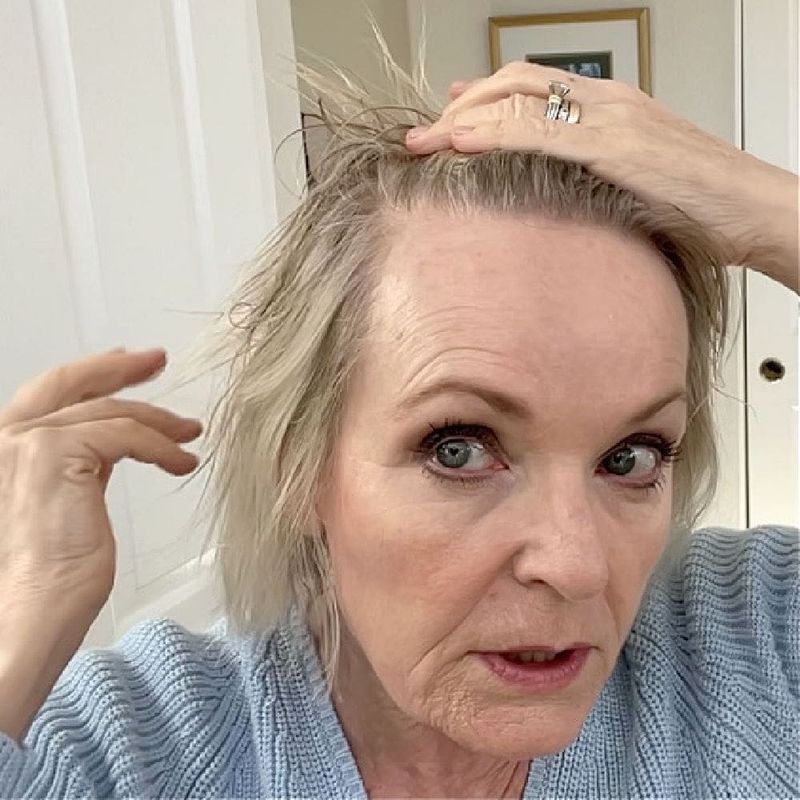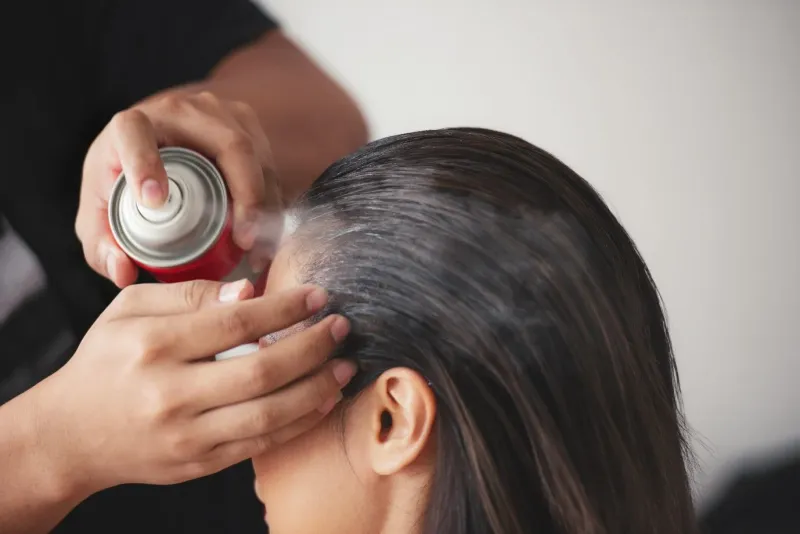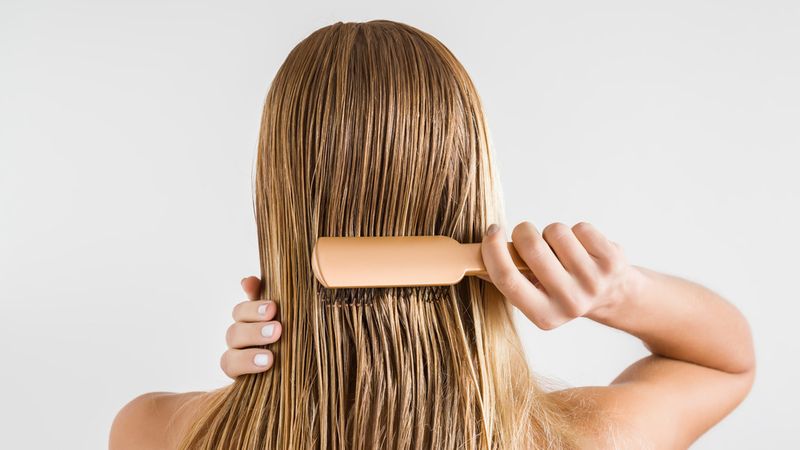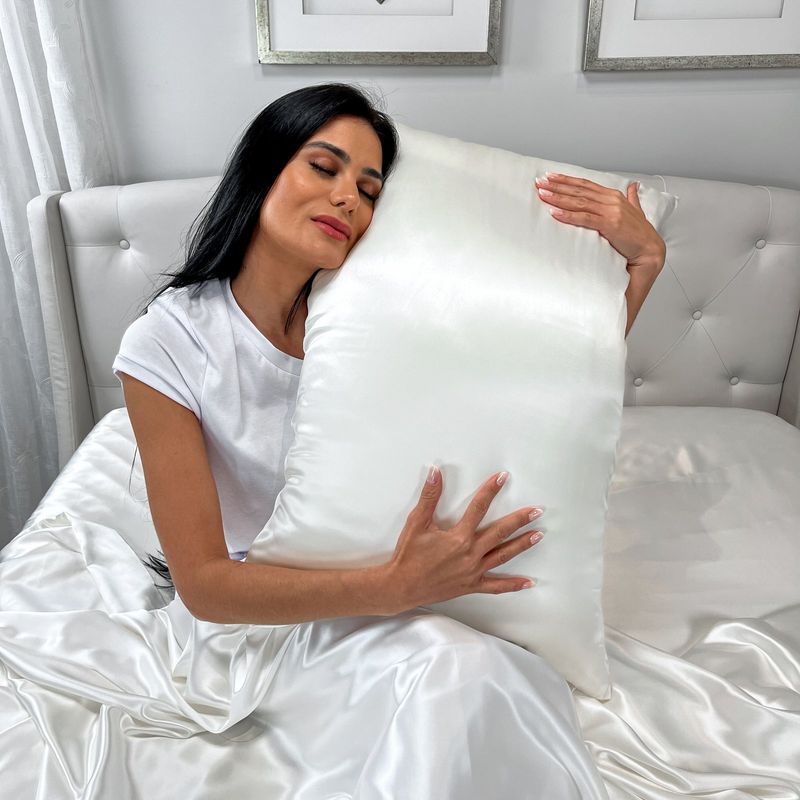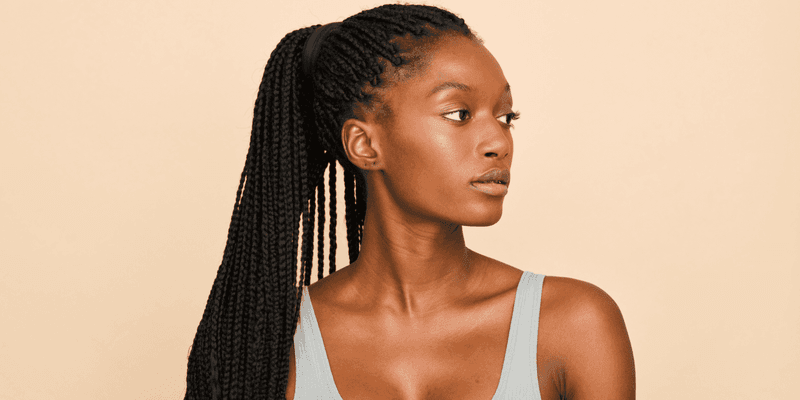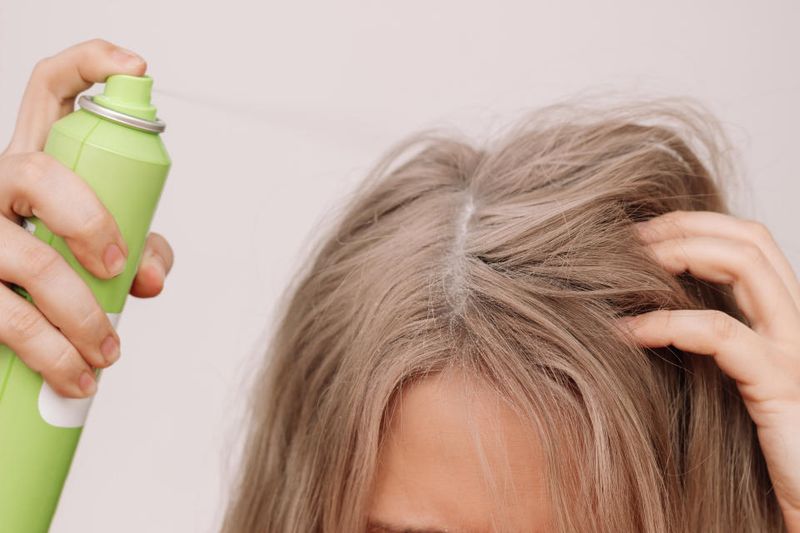As we age, our hair naturally becomes finer and more delicate, requiring special attention to styling and cutting. After 70, certain haircuts can make thin hair look even flatter, while common styling mistakes might worsen the problem. Let’s explore the haircuts to avoid and the styling errors that can make fine hair appear lifeless.
1. Blunt-Cut Bob Without Layers
Heavy, one-length bobs create a solid mass that pulls down fine hair. The weight of this cut flattens volume at the crown where mature women need it most.
Instead, consider graduated layers that distribute weight more evenly and create natural lift.
2. Super Long Straight Styles
Extra length creates excessive weight on aging strands. Gravity pulls down fine hair when it extends past the shoulders, making it appear thinner and more stringy.
Most stylists recommend keeping mature fine hair above shoulder-length for optimal body.
3. Shaggy Layered Cuts Without Structure
Random, excessive layers can make fine hair look wispy and unstructured. Without proper framework, shaggy styles often separate and reveal scalp areas.
Strategic, deliberate layering works better than haphazard choppy cuts on mature fine hair.
4. Sleek Straight Center Parts
Center parts expose the scalp and highlight any thinning along the part line. Sleek styling further flattens volume where older women need it most.
This severe style draws attention to facial asymmetries that naturally develop with age.
5. Heavy Blunt Bangs
Thick, straight-across bangs create a heavy visual weight at the forehead. This style makes the rest of fine hair appear even thinner by comparison.
Dense bangs also require frequent trims, which can be challenging for seniors with limited mobility.
6. One-Length Pageboy Cut
The curved-under pageboy creates a helmet-like effect that weighs down fine hair. This dated style requires heavy product to maintain its shape, further flattening natural volume.
The uniform length lacks the dimension needed for aging hair.
7. Overly Thinned-Out Pixie
Excessive thinning with texturizing shears can remove too much bulk from already fine hair. What’s meant to create texture often results in spiky, separated strands that expose the scalp.
Mature pixies need some weight to maintain shape.
8. Shoulder-Length Cut With Blunt Ends
Heavy, straight-across ends create a visual weight line that drags down fine hair. This length sits at the shoulders, where friction from clothing further damages delicate strands.
The lack of movement in this cut ages the overall appearance.
9. Mullet-Inspired Cuts
Short top layers with longer back sections create an unbalanced weight distribution. This outdated style makes fine hair appear thinner on top where volume is most needed after 70.
The contrast between lengths emphasizes rather than disguises thinning.
10. Slicked-Back Styles
Pulling hair straight back exposes the hairline and any thinning at the temples. This severe style flattens the crown area and offers no softness around the face.
The tension can also stress fragile hair follicles, potentially causing more hair loss.
11. Over-Using Heavy Conditioners
Rich conditioners meant for thick hair coat fine strands with heavy residue. This weighs down delicate hair and makes it look greasy faster, flattening any natural volume.
Lightweight, volumizing formulas work better for aging fine hair.
12. Daily Heat Styling Without Protection
Frequent blow drying, curling, and straightening damage fine hair’s already fragile structure. Heat strips moisture and breaks down protein bonds, making thin hair even more susceptible to breakage.
The resulting damage creates frizz rather than smoothness.
13. Skipping Regular Trims
Avoiding haircuts allows split ends to travel up the hair shaft. This weakens fine hair and creates wispy, uneven ends that lack definition and shape.
Even conservative trims every 6-8 weeks maintain healthier-looking ends and overall style integrity.
14. Using Round Brushes That Are Too Large
Oversized round brushes create tension that pulls and flattens fine hair at the roots. The excessive stretching can damage delicate strands and create an outdated, overly round shape.
Smaller barrel brushes provide better control and gentler styling.
15. Applying Products Directly to the Roots
Concentrating styling products at the scalp weighs down the hair where lift is most needed. This common mistake flattens fine hair instantly and can make it look greasy even when clean.
Focus products on mid-lengths and ends instead.
16. Excessive Hairspray Application
Heavy application of traditional hairsprays creates a stiff, immovable effect. This dated approach makes fine hair look artificial and can cause buildup that further weighs down delicate strands.
Modern, flexible-hold formulas work better for natural movement.
17. Brushing Fine Hair When Wet
Wet hair is at its most vulnerable state, especially fine aging strands. Brushing while wet stretches and breaks these delicate hairs, creating frizz and increasing thinning over time.
Wide-tooth combs are gentler alternatives for detangling.
18. Sleeping on Cotton Pillowcases
Rough cotton creates friction that damages fine hair cuticles during sleep. This nightly abrasion leads to frizz, tangles, and breakage that makes fine hair appear even thinner.
Silk or satin pillowcases reduce this damaging friction significantly.
19. Tight Ponytails and Updos
Securing fine hair in tight styles puts stress on fragile follicles and can cause traction alopecia. The tension damages hair at the hairline and temples, areas already prone to thinning after 70.
Looser styles prevent this unnecessary stress.
20. Overusing Dry Shampoo
While convenient, excessive dry shampoo builds up on the scalp and suffocates hair follicles. This residue creates a dull, matte finish that makes fine hair look lifeless and can impede healthy growth.
Limit use to once between regular washes.

